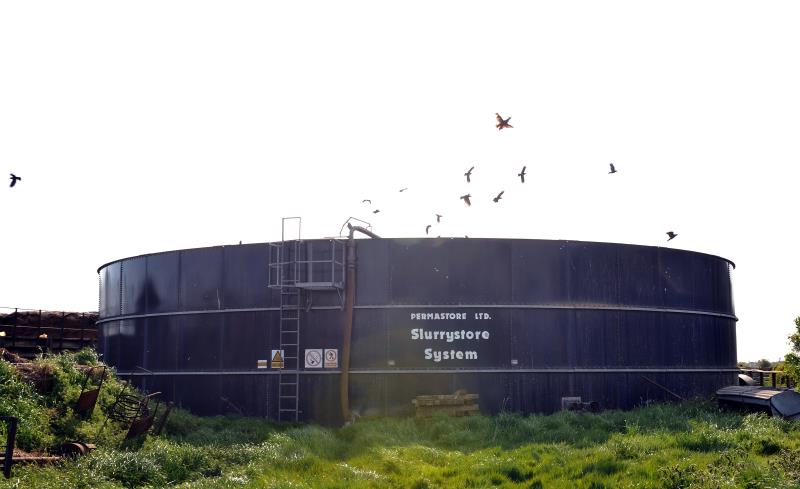With recent media statements highlighting the lack of understanding on the use of manures across UK farms, we bust some myths on the use of manure versus manufactured fertiliser.
Is there enough manure to replace manufactured fertiliser?
No. This country already produces around 48 million tonnes of combined organic manures each year, but all of that is already being used by farmers to provide nutrients to crops and grass, and improve soil health. The fertilisers we use at the moment are on top of that use of manure.
How much more manure would be required to replace manufactured fertiliser?
As well as using all the manure already produced, farmers use around 1,500,000 tonnes of manufactured fertiliser each year. Of this volume, just over 1,000,000 tonnes is nitrogen – an essential crop nutrient which plants need to grow.
It’s hard to be specific about how much manure would be required to replace this because each type of manure has a different ratio of nutrients within it, but it would be tens of millions of tonnes.
For example, cattle farmyard manure (FYM) typically contains a total of around 6kg of nitrogen per tonne [1] whereas a tonne of ammonium nitrate fertiliser contains 345Kg, and a farmer would need 57.5 tonnes of FYM to replace that one tonne of fertiliser.
We would need tens of millions of tonnes more manure to replace the manufactured fertiliser we currently use.
Is the manure in the right place to replace manufactured fertiliser on crops?
No. Some parts of the country are predominantly arable or livestock focussed, and organic manures are often bulky and heavy compared to manufactured fertiliser. As a result, even if there were enough manure to replace manufactured fertiliser on arable crops, which there isn’t, it’s not in the right place to do so.
Transporting it is logistically difficult and carbon intensive, so it would not be feasible or efficient to move it long distances.
Is manure a direct replacement for manufactured fertiliser?
No. Both perform the same role in providing nutrients to crops, but they bring different benefits. Manures benefit the soil by adding organic matter and carbon to the ground, but fertilisers can be more tailored to the precise nutrient needs of the crop or grass being grown.
For example, if we assume again that cattle FYM typically contains a total of around 6kg of nitrogen in each tonne, and 3.2kg of phosphate. If your crop needs 60kg of nitrogen to grow that year, with FYM you could do this with 10 tonnes being applied.
However, there is no way to vary how much phosphate would be applied as well, it would be around 32kg. If the crop needs more than 32kg, this must come from somewhere else.
With a manufactured fertiliser, a farmer can select a product which closely provides the right ratio of nutrients to address a crop need. Many farmers will use both, applying manures to provide a base level of nutrients and improve the soil, but applying fertiliser to ensure the nutrients they apply are tailored to the crop and as efficient as possible.
Manures are also not suitable for every situation, because some processors prefer not to allow the use of some types on the crop they are buying.
Manure v Manufactured – what’s the difference, and is there enough organic manure to replace fertiliser?
— NFU Combinable Crops (@CropsBoard) March 25, 2022
Our Chief Crops Adviser, Anthony Hopkins, busts some myths using a bag of 20:10:10 fertiliser ⤵️
For more myth busting, visit NFU Online 👉 https://t.co/bUrs9bIOQz pic.twitter.com/BgYiBjkIwr
Why does it matter at the moment?
Manures and fertiliser have always been important to grow good crops and grass, but the current cost inflation in energy and fertiliser means that prices of manufactured fertiliser have risen to unprecedented levels, with fertiliser now costing around £900/t, 218% [2] more than a year ago.
However, feed wheat pricing has only seen around a 45% increase over the same period (delivered prices – May) [3]. Farmers are facing a real dilemma about how much fertiliser to apply to their crops each year, and what to plant next year.
This level of inflation is already causing cash-flow problems on farm, as members must find much more money than they had budgeted for to buy fertiliser.
If fertiliser is too expensive, or not available, the quantity and quality of crops and grass grown in this country, which we rely on to feed people and animals, will be impacted and reduced.
The UK produces around 50% of the fertiliser farmers use domestically. If we lose that production, we will be more exposed to global price inflation and supply problems.
Sources
[1] RB209 Section 2 Organic materials | AHDB
[2] Based on Mar 2021 AN – UK produced (34.5% N) price – £283/t Fertiliser information | AHDB
[3] Averages for months taken from UK delivered prices | AHDB
